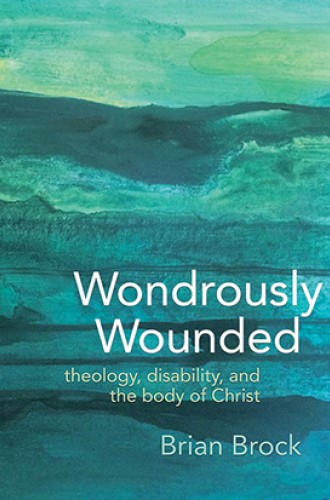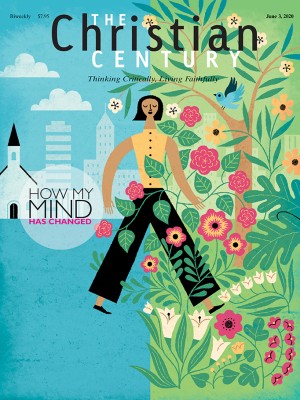Seeing disability through a lens of wonder
Brian Brock’s book is both academic and deeply personal.
As congregations across the theological spectrum struggle to include individuals with disabilities in their communal life, many scholars are calling for a revision of the view that individuals with disabilities live tragic or painful lives. Drawing upon biblical studies, ethnography, or systematic theology, most of these authors propose new ways of understanding inclusion, highlighting the uncommon and unexpected ways God’s grace works. Brian Brock’s complex interdisciplinary volume joins that chorus of voices. His erudite theological analysis is grounded in the practical realm by his reflections on life with his son Adam, who has both Down syndrome and autism.
Brock begins by recounting how the early church understood the births of “anomalous individuals” not as tragedies but as signs from God, who bestows them with a unique vocation of calling forth Christian wonder. For Brock, the advancement of prenatal genetic testing that informs parents of genetic abnormalities prior to birth has resulted in a loss of that wonder. Medicine’s place in a liberal society, Brock believes, subjects parents to both overt and subtle pressures to end such pregnancies. The assumption is that individuals with genetic abnormalities will be a burden and will be unlikely to live happy, independent lives.
Read our latest issue or browse back issues.
Brock writes both academically and from experience. He recalls how he and his wife chose to resist for a time the doctors’ desire to test Adam for Down syndrome shortly after his birth. Against the technologically driven understanding of human life that would consider such a diagnosis a tragedy, Brock calls for a return to wonder that sees all births as God given. This wonder depends on openness to God’s working in unexpected ways.
Stories of Brock’s life with Adam heighten the stakes of his arguments and lend the book deep authenticity. His understanding of humanity, which he’s asking readers to adopt, is one he lives every day. Brock’s stories are honest and vivid, and his love for Adam is clear. Readers will find in this book a living example of how looking at those with disabilities through the lens of wonder can transform understandings of God and of congregational life.
Brock engages in a highly technical reflection on the Pauline “body of Christ” imagery, one that has significant implications for the way Christians view people with disabilities and their place in the church and society. For instance, in 1 Corinthians 12:22, Paul writes about the “weaker members of the body of Christ.” Brock notes that some translations of the Greek adjective here, such as the word feeble, have led to the common interpretation that Paul is referring to people with disabilities. He argues against this reading.
What Paul really means by “weaker,” Brock claims, is those who are held in less honor. According to Paul, gifts of the Spirit flow through all members of the body, not just the esteemed ones. We can only see the gifts of those people whom society considers weak, Brock argues, “when the codes of social superiority and inferiority learned in the world are revealed as false social constructions.” And tearing down those social constructions begins with an openness to wonder.
Brock grounds his theological case for wonder in Franz Rosenzweig’s understanding of health. Some readers may question, as I did, what it means to import a theological concept from a Jewish framework into an argument that is relentlessly Christological. Brock doesn’t seem worried about such questions. His main concern is to transform Christian understanding and treatment of people with disabilities, at both individual and congregational levels.
Wondrously Wounded is also no respecter of disciplinary boundaries. Brock traverses fluidly between scriptural studies, systematic theology, bioethics, and memoir. For example, in one short section he engages in the technicalities of biblical exegesis, quotes Bonhoeffer on ecclesiology, tells a story about Adam, and critiques secular bioethics. The fact that the book is not beholden to any one discipline or genre can be seen as a strength.
But Brock’s aim to be both interdisciplinary and rigorous sometimes causes his considerable passion for his argument to be obscured in the weeds of technical debates with secondary literature. The richness of his overarching argument will be difficult for nonspecialists to perceive. In the end, the readers who benefit from the book are likely to be academics. Yet Brock’s argument is for the church, so it is unfortunate that this wondrous book is wounded by its own complexity.
I am also curious about how lament fits into Brock’s picture of wonder. Is there any way that parents of people with disabilities and others who love them can utilize Brock’s framework of wonder and still cry out to God in frustration for the pains and challenges that disability creates? It’s not clear from Brock’s argument what role lament might play.
Still, this book is a wonder. Filled with insight, passion, and love, it calls us to open our eyes and find God at work through the Holy Spirit in each member of Christ’s body.







